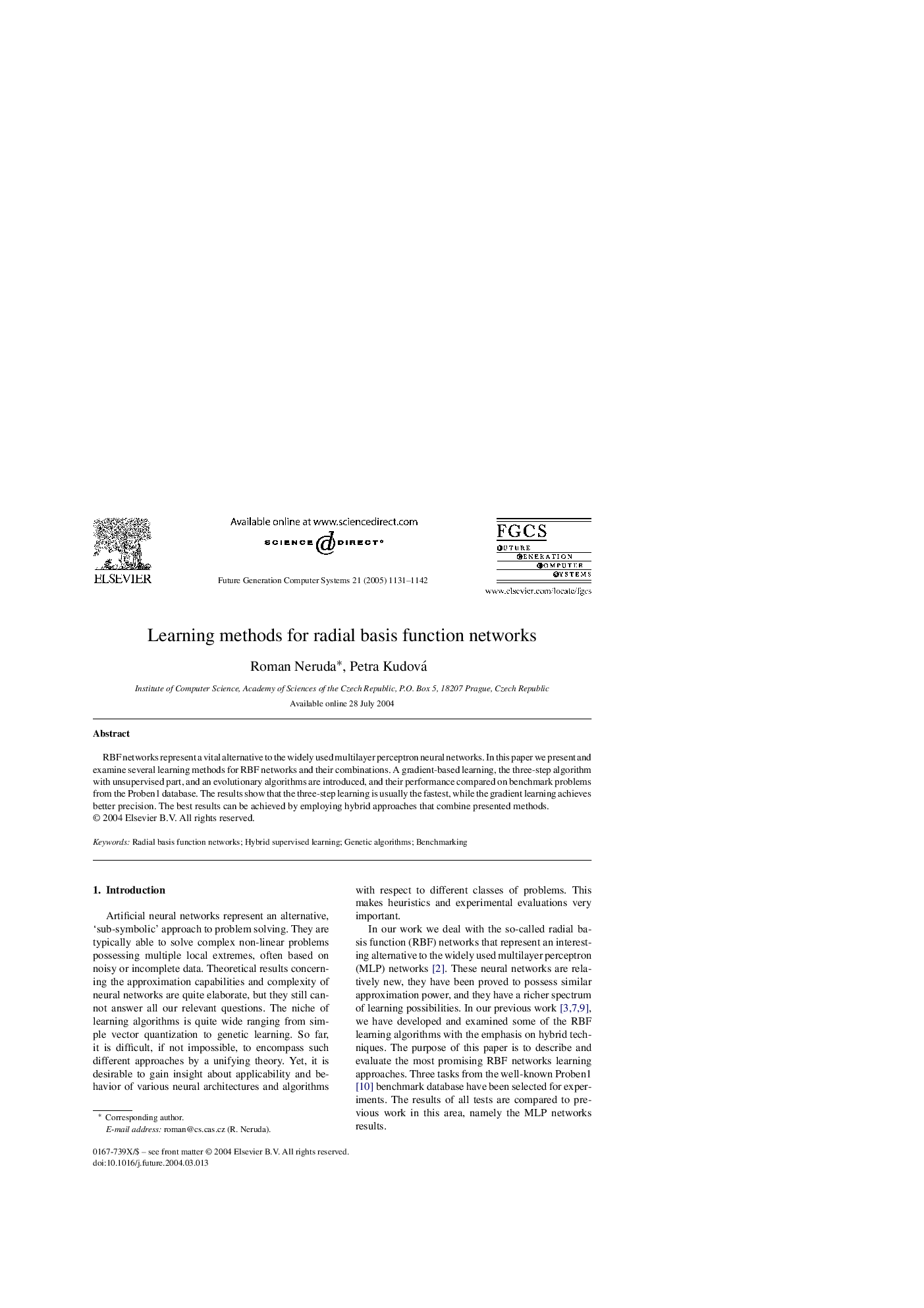| Article ID | Journal | Published Year | Pages | File Type |
|---|---|---|---|---|
| 10330420 | Future Generation Computer Systems | 2005 | 12 Pages |
Abstract
RBF networks represent a vital alternative to the widely used multilayer perceptron neural networks. In this paper we present and examine several learning methods for RBF networks and their combinations. A gradient-based learning, the three-step algorithm with unsupervised part, and an evolutionary algorithms are introduced, and their performance compared on benchmark problems from the Proben1 database. The results show that the three-step learning is usually the fastest, while the gradient learning achieves better precision. The best results can be achieved by employing hybrid approaches that combine presented methods.
Related Topics
Physical Sciences and Engineering
Computer Science
Computational Theory and Mathematics
Authors
Roman Neruda, Petra Kudová,
